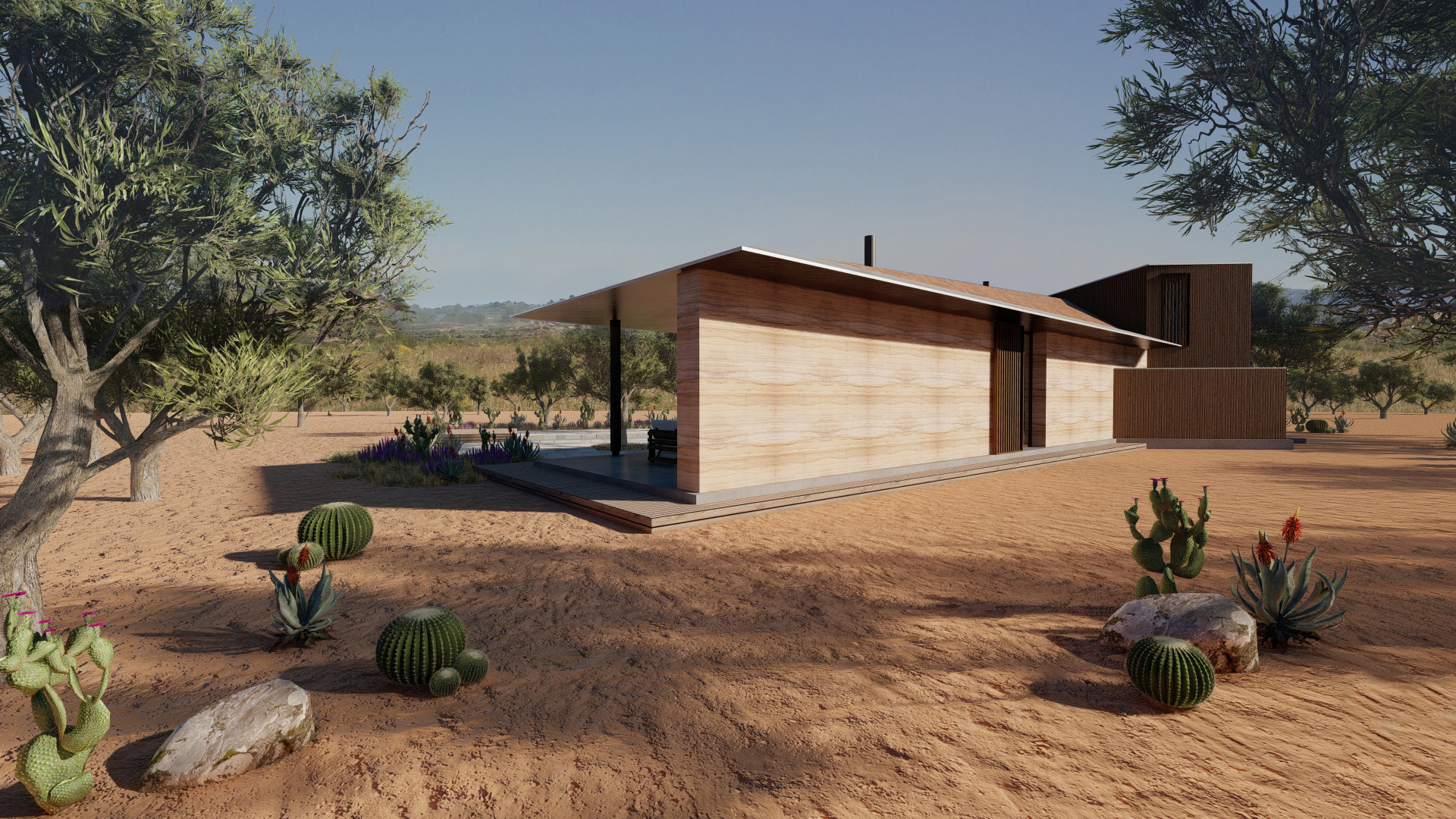This isolated single-family home is the result of combining strict regulations regarding the construction of a new build on undeveloped land, the amazing taste of our clients in designing the home of their dreams, and the incorporation of the beauty and incomparable colours of the place into a holistic and contextually sensitive design.
The house is located in a beautiful natural setting, in the middle of a field of olive trees with views of the nearby mountains. When visiting the place for the first time, one of the first things that caught our attention were the colours of the earth, of incomparable beauty and shades. We thought about how this should be an integral part of the project, and how we could bring those colours and textures inside the house and make them a central feature of the design.
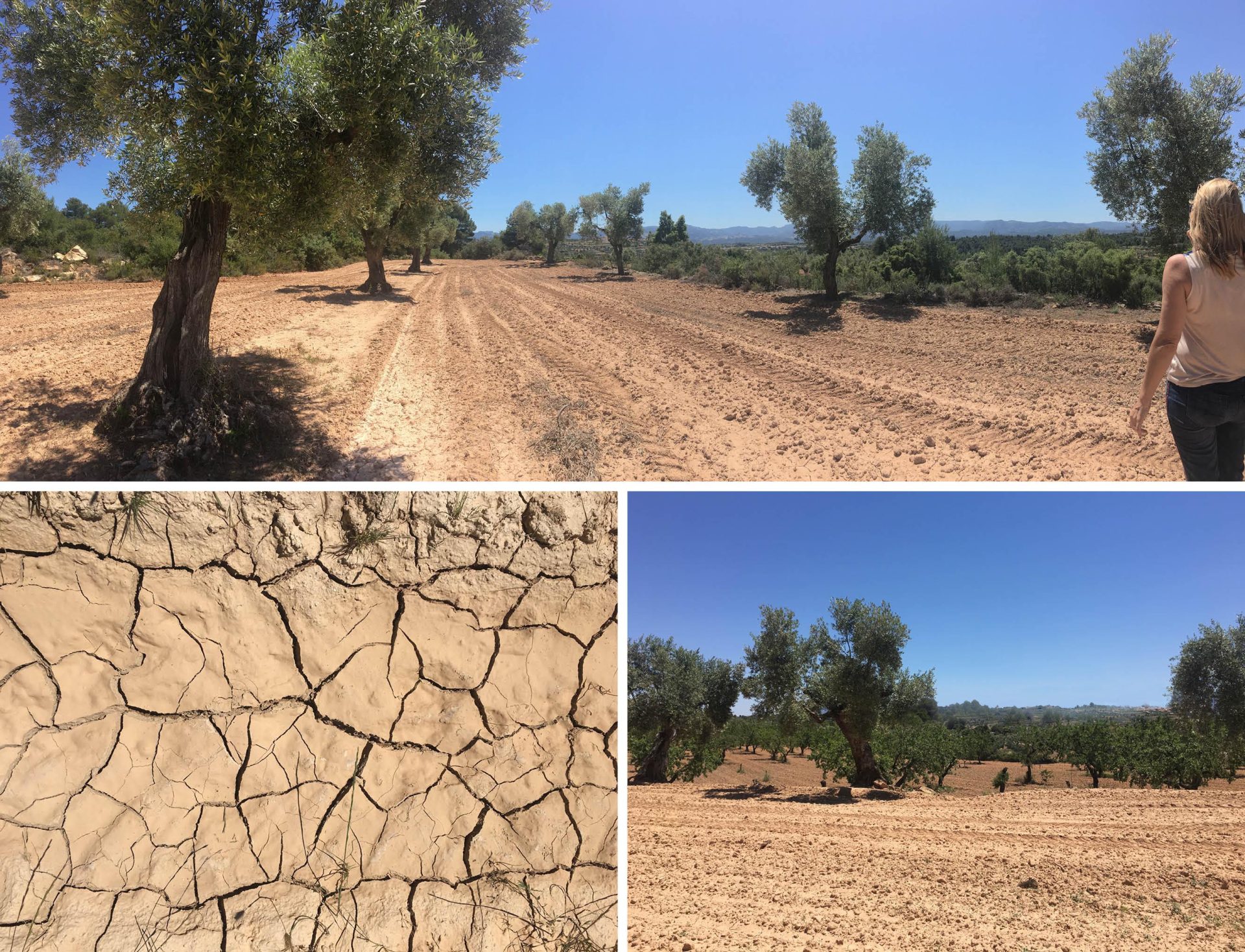
Photographs of the land, taken on the day of our first visit
The clients, in their love for the site, fell in love with the idea of integrating rammed earth walls into the project, using the excavated earth of the site itself. The load-bearing rammed earth walls act as a central element and support the roof. They welcome one, guiding one towards the main entrance and, left exposed, serve to integrate the colours and texture of the site into daily life.
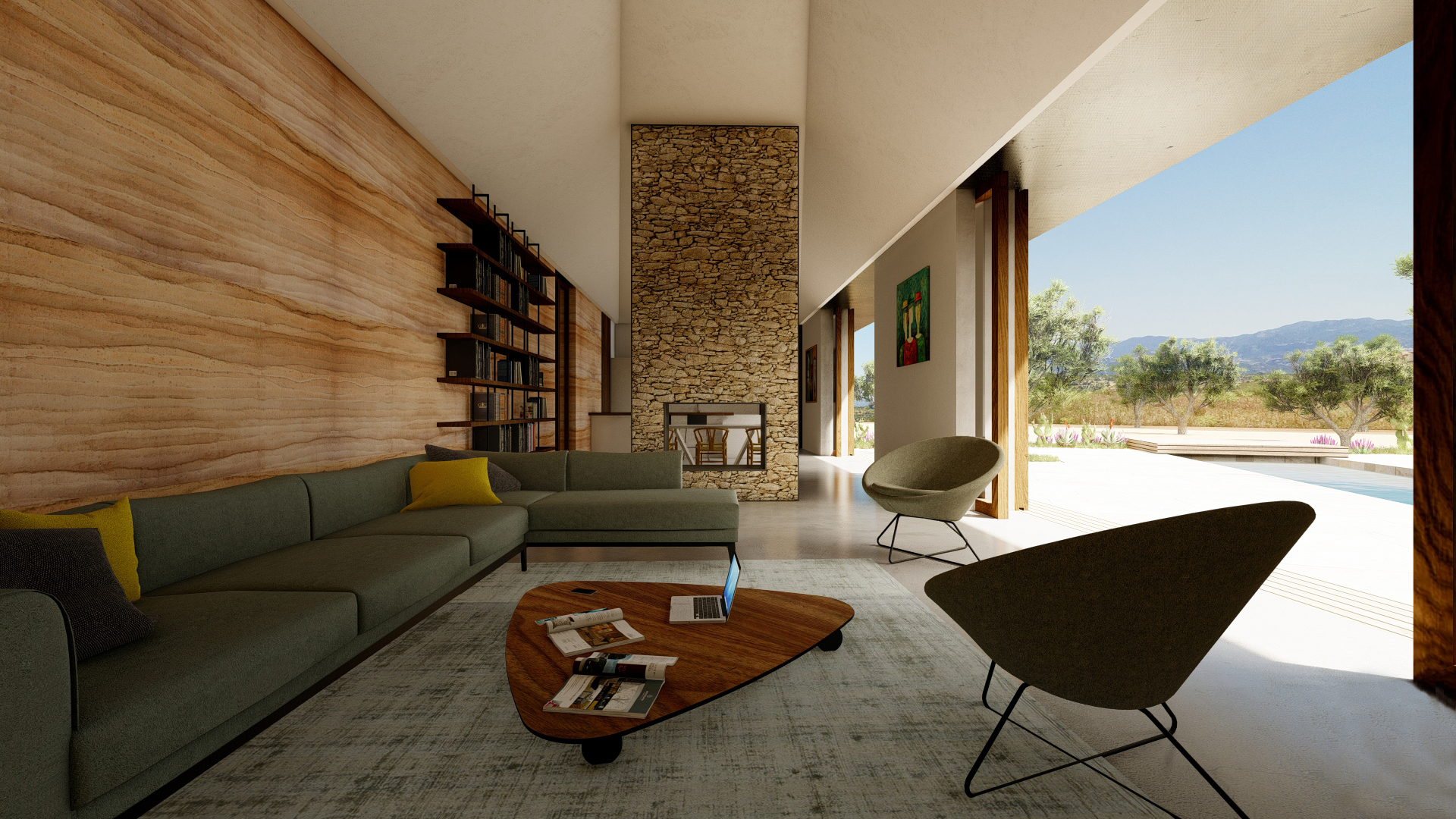
Visualisation showing the rammed earth wall inside the living areas
In the sleeping areas, the uncoated rammed earth walls are used as separating walls, being visible both in the passage and inside the bedrooms.
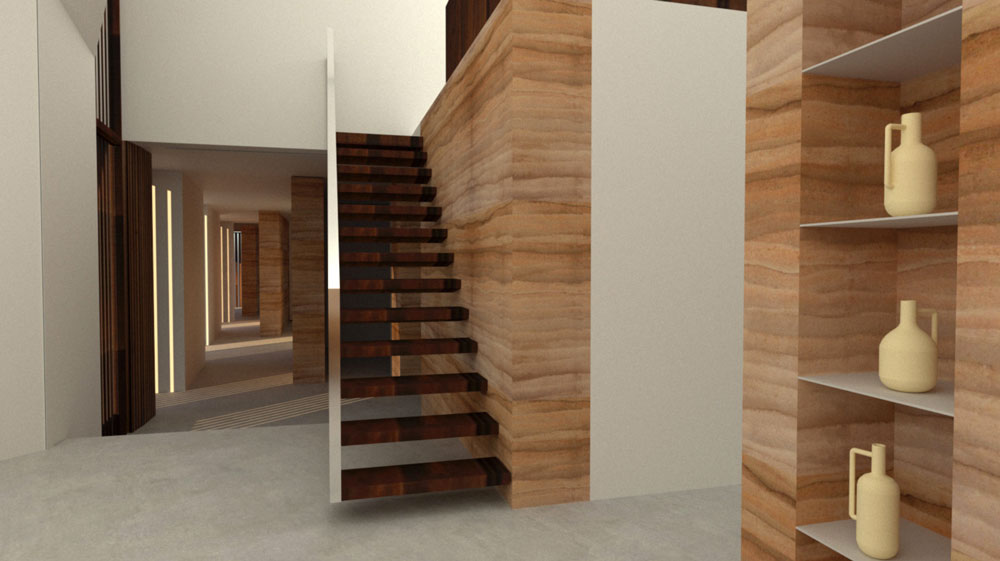
Visualisation showing rammed earth walls in the bedroom wing
This ancient technique of compacting the earth required input from a specialist. We were guided by the company “Fet de Terra” in the execution of the work. We started with a series of test excavations in different areas of the site to determine the varying composition of the earth strata. Two types of soil located in two different areas of the site were suitable for use: one more clayey with a reddish colour; and another of a more yellow tone.
As the Wall is structural in the living areas, and must also include thermal insulation in the centre, it was especially important to analyse the structural characteristics in detail. “Fet de Terra” did various laboratory tests to establish the exact soil mixture required and an extensive report was compiled. Once the suitable land was identified, the excavation began, and good soil was separated from unusable soil. Many trucks of earth were required for this process.
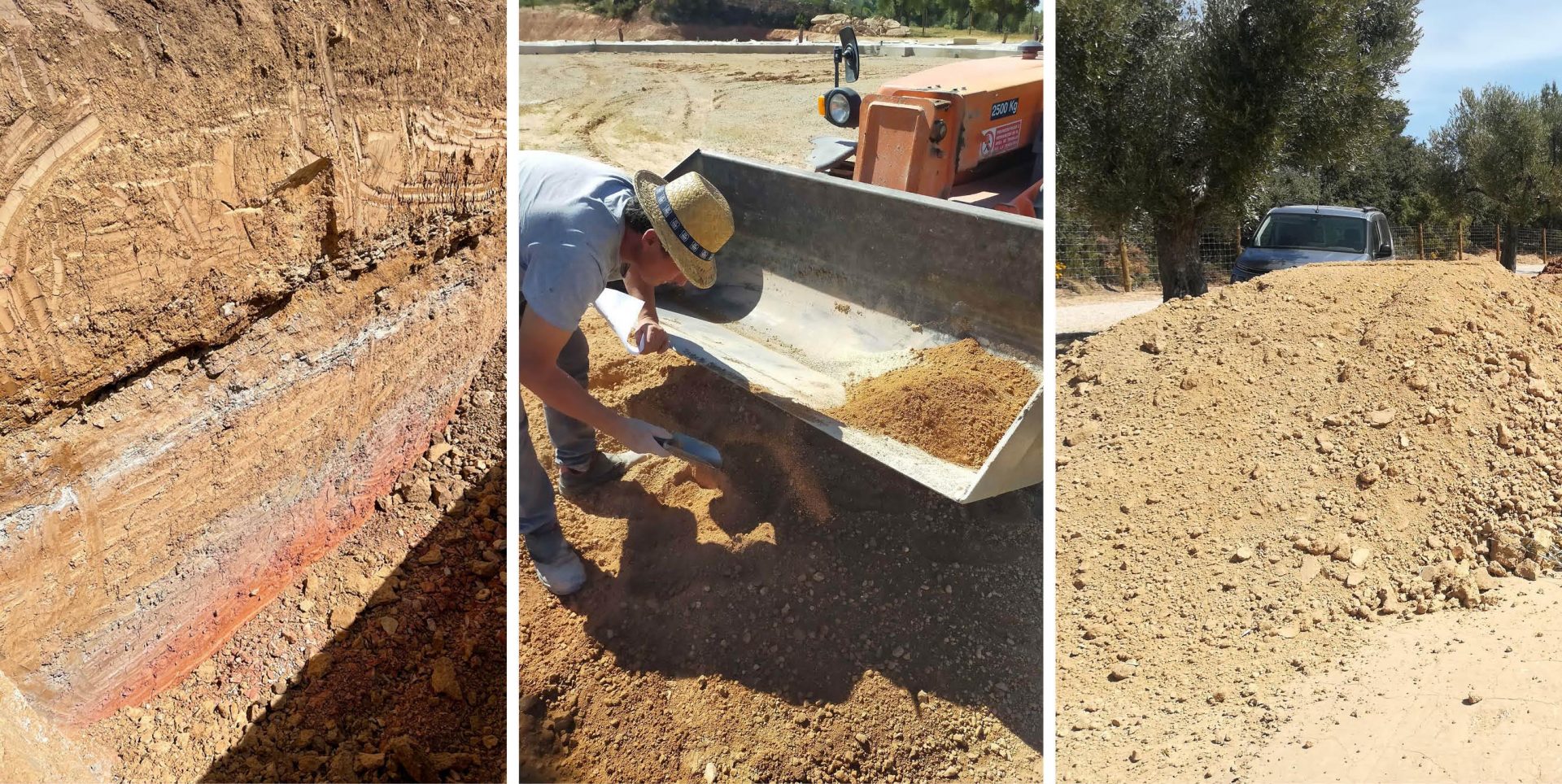
Ground test investigating terrain strata Soil selection Collection of land suitable for the rammed earth wall
Once the suitable earth had been extracted and the composition of the mixture of local soil, lime, gravel and sand that was to make up the wall had been established, “Fet de Terra” visited the farm to develop a prototype together with the local contractor. This prototype which was 1.2 m wide x 0.8 m high was not only useful to teach the contractor the correct way to execute it, but also to see how the local soil behaved when mixed with the rest of the components.
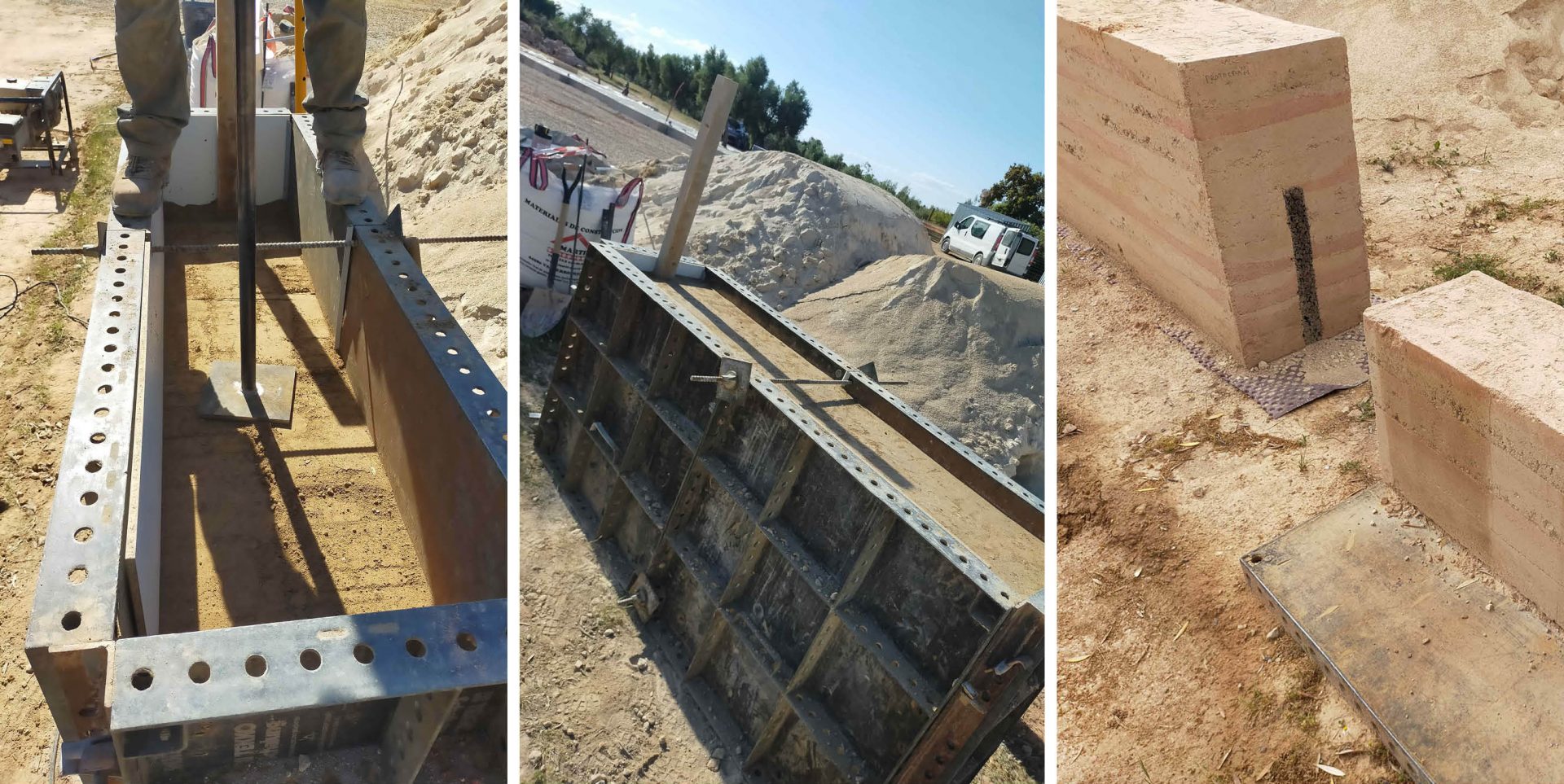
Creation of prototype
The resistance tests gave good results but we detected that the reddish color of one of the two types of soil (the more clayey) was lost and whitened when mixed with the lime. This led us to introduce a small amount of natural clay pigment into the mixture so that the two different tones of the earth could be seen. It was not an easy process as the first samples with a pigment added made it far too red, and we had to carry out several more tests to find the right proportion of pigment.
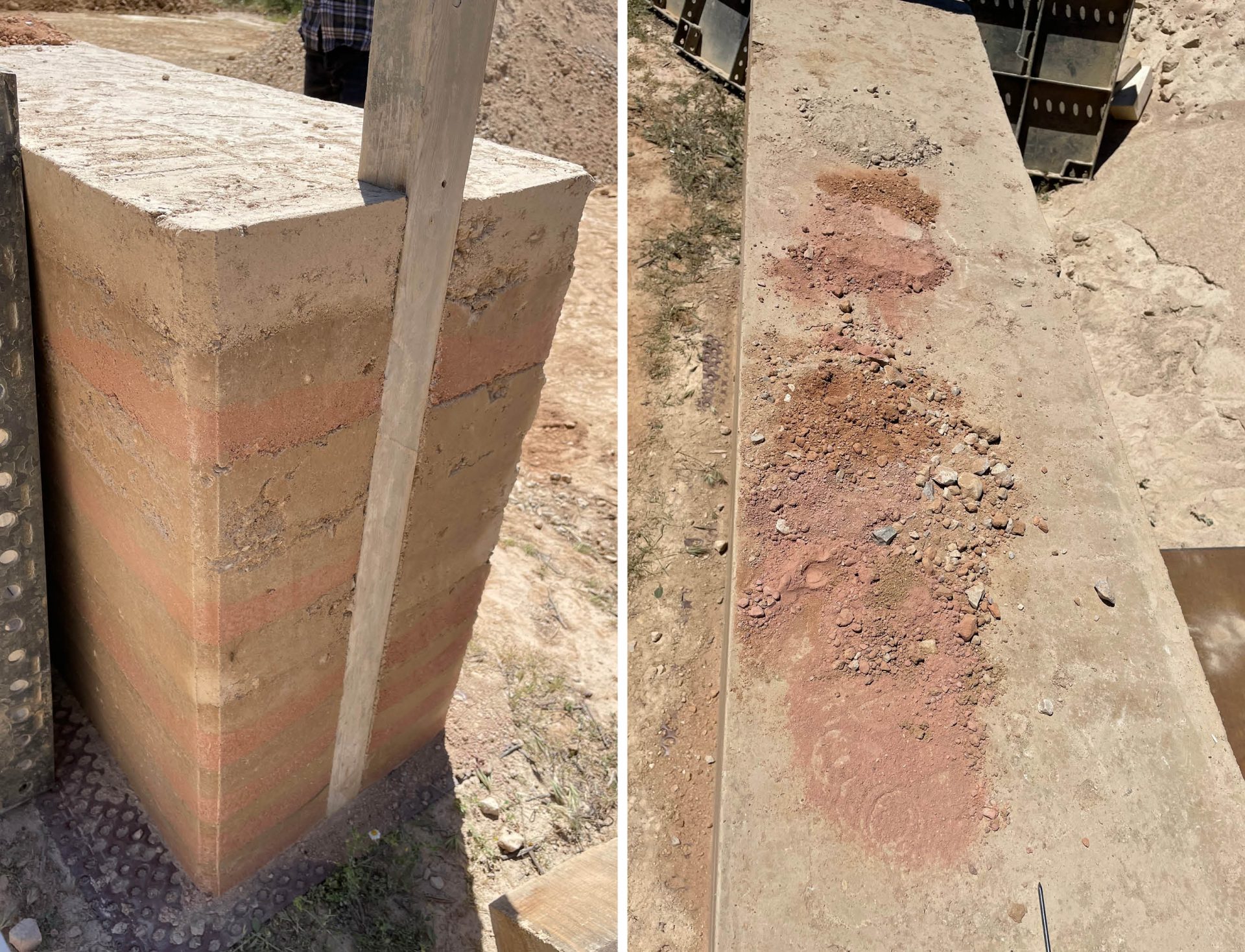
Test showing too much pigment Tests exploring pigment proportions
Meanwhile, the foundation of the house and the IPN steel profiles that would serve as the base of the rammed earth walls were being executed. These IPNs are joined together with 14 mm diameter steel bars, welded to the profiles every 50 cm, and bent in 15 cm x 5 cm “L” shapes, set in concrete.
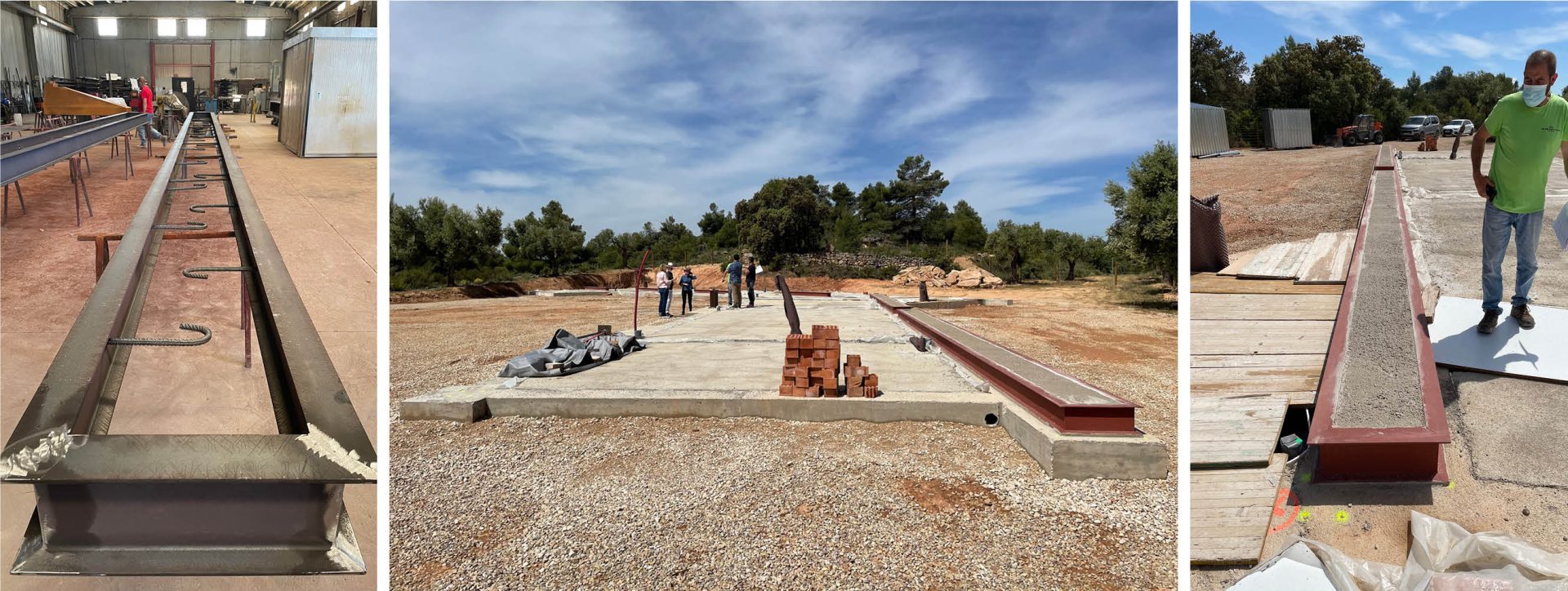
Preparation of the IPN Steel profiles in the factory Concrete foundation with the IPN base profiles set above
The next step was to decide on the size and placement of the formwork boards based on the available board measurements and the effect of the lines that we wanted. While the contractor, very committed to the challenge of building this wall, investigated how to optimise the hard work of compaction, looking for tools that could help him. A hydraulic compactor was discovered to be the best tool for the job.
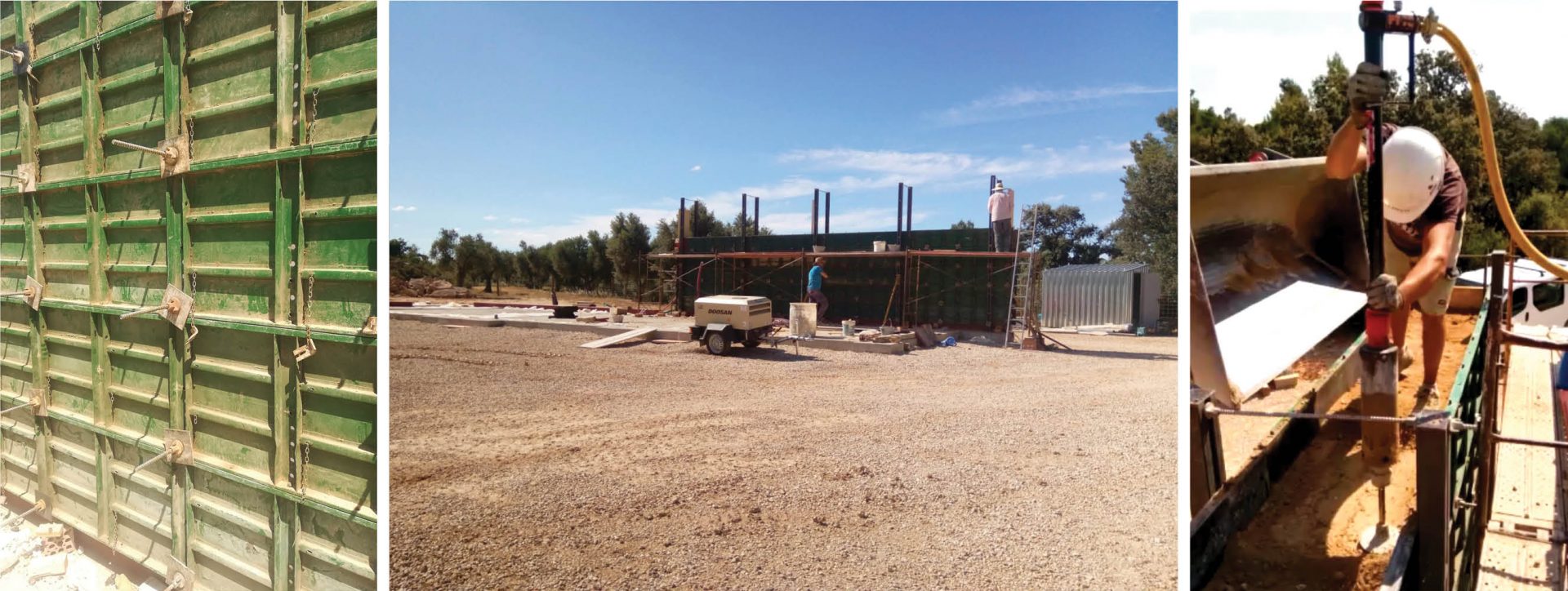
Formwork of the first section of wall Hydraulic compactor underway
The execution of the rammed earth wall began with the most complex wall: that of the living area. A 3.30 m high wall that acts as a façade and load-bearing wall for the roof, made up of two sheets of 25 cm rammed earth joined together with connection bars and with a 6 cm thick cork thermal insulation between the two leaves, thus giving a total thickness of 55 cm.
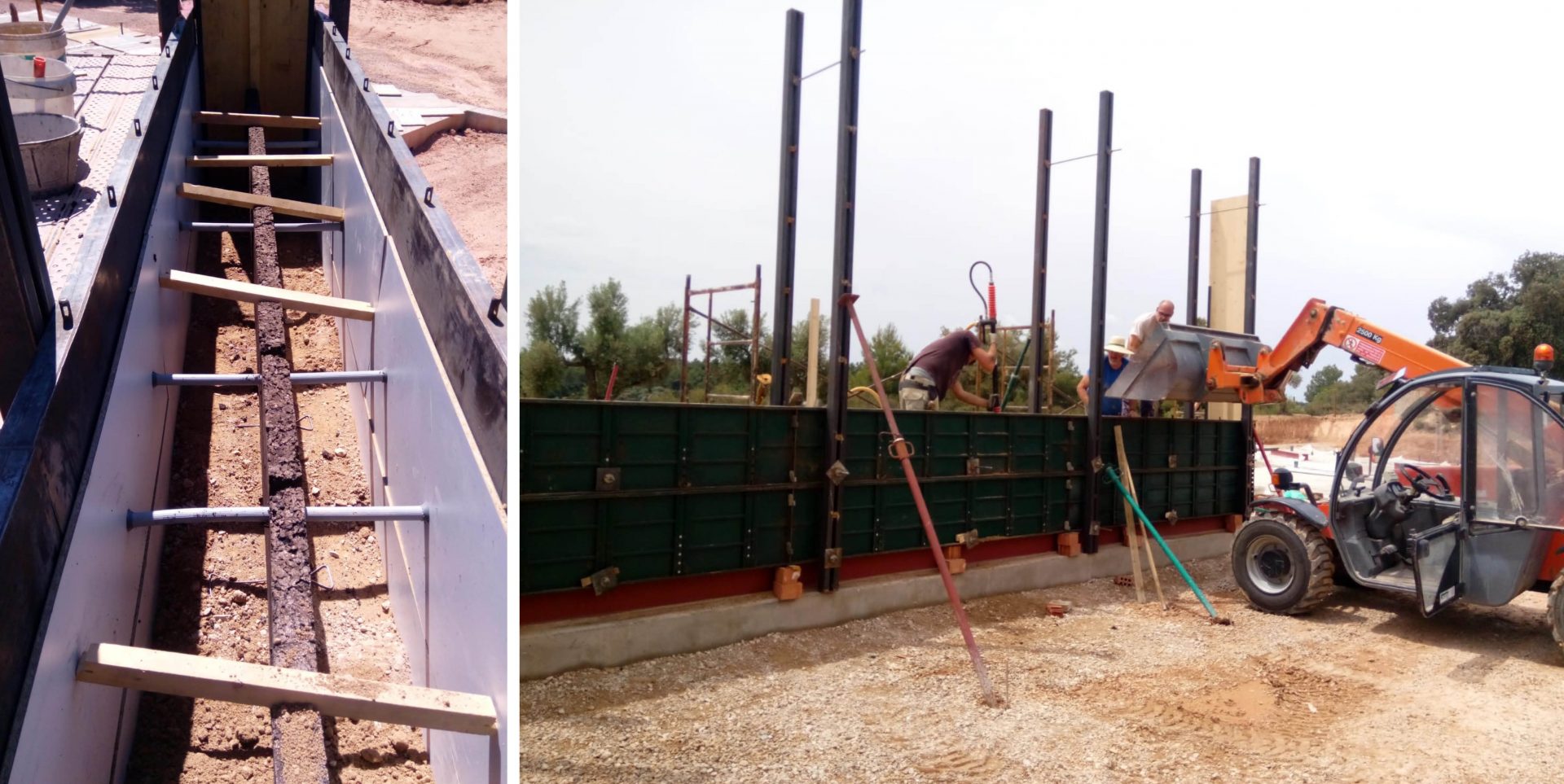
Execution of the first section of the structural wall in the living area
The first section of this wall, 10.5 m long, required four days to place the formwork and two more weeks to compact the earth. It has recently been stripped of its formwork and the result has been more than satisfactory, the product of great planning and careful execution.
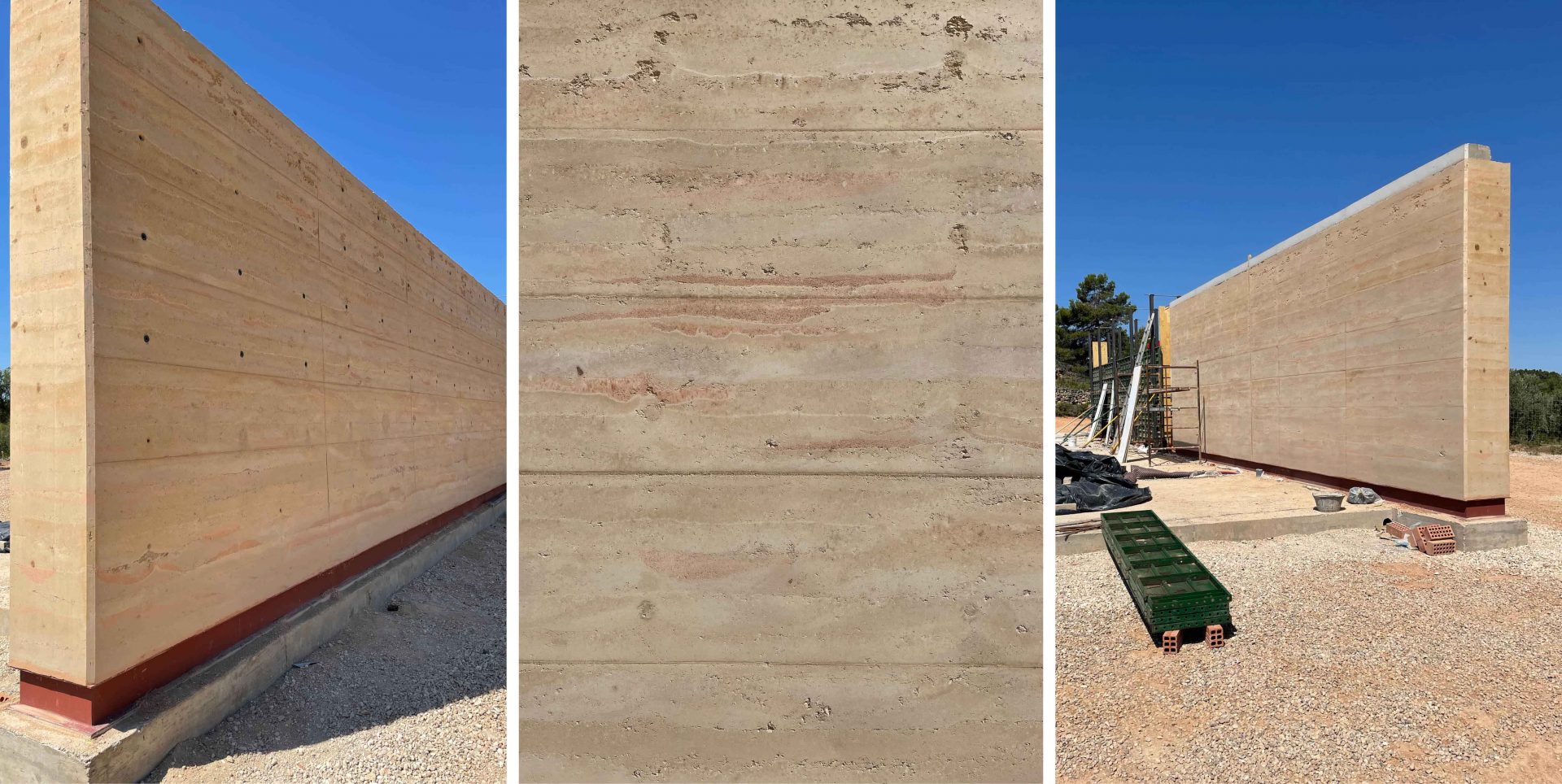
First section of rammed earth wall completed
The second section of the wall in the day zone is currently under construction and it is estimated that it will take two weeks to complete. The four interior walls in the bedroom wing are not load-bearing and so they do not require thermal insulation and so are only 30cm thick. It is estimated that it will take a week to execute each of these interior walls which gives us a total of 2 months to execute all the rammed earth walls of the house, just in time to place the wooden structure that will arrive when they are finished. If you watch the video below, you will understand why it takes so long. It is a challenging, manual process.
Once all the walls are finished, a sealant should be applied to prevent earth coming off when touching the wall. This will slightly intensify the tone and give a “wet” effect. We are currently in the product research phase. Two of the products tested so far are not satisfactory, since one of them creates a film with a very plastic feel that ruins the natural texture of the earth, and the other does not create the wet effect that we are looking for.

Formwork of the second section of wall in the living area Test showing unsatisfactory plastic texture finish

